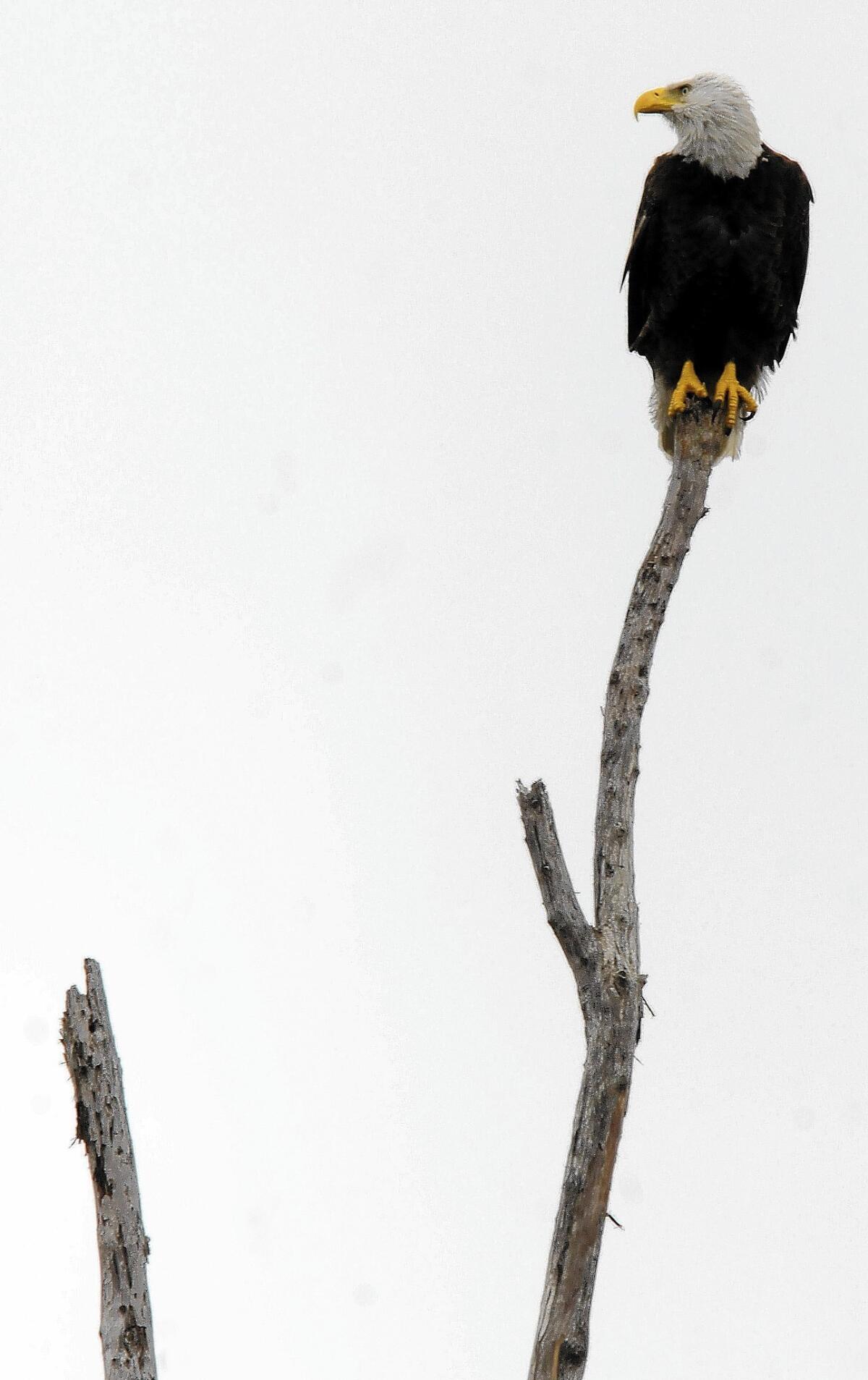Wind farms get extended leeway on eagle deaths

- Share via
SEATTLE — In a decision that highlights the clash between two cherished environmental goals — producing green energy and preserving protected wildlife — federal officials announced Friday that some wind power companies will be allowed to kill or injure bald and golden eagles for up to 30 years without penalty.
Conservation groups decried the Obama administration’s new regulation as a “stunningly bad move” for wildlife, but wind industry officials said Friday that the rules from the Department of the Interior were far from a “free ride.”
“Instead of balancing the need for conservation and renewable energy, Interior wrote the wind industry a blank check,” National Audubon Society President David Yarnold said in a statement. “It’s outrageous that the government is sanctioning the killing of America’s symbol, the bald eagle.”
But Peter Kelley, vice president of public affairs for the American Wind Energy Assn., said that for a wind farm to be permitted under the new rules, “you have to document all of the different ways you’ll preserve the eagles. You’ll be checked on every five years. Even then, if more eagles are dying than you expected, you have to do more things or lose your permit.”
The federal Fish and Wildlife Service began issuing permits in 2009 to developers of renewable energy projects, allowing the so-called “taking” of bald and golden eagles, which are federally protected. The early permits lasted a maximum of five years, which the industry argued was not sufficient for long-term investment in wind power facilities.
The new regulations would extend the permits to a maximum of 30 years and be issued only to “applicants who commit to adaptive management measures to ensure the preservation of eagles,” the Interior Department said in announcing the rules.
Kelley said the new regulations would “increase the protection of eagles and will help develop more wind farms, a leading solution to climate change, which is the No. 1 threat to all eagles and all wildlife.”
There are wind farms in 39 states and Puerto Rico, but much of the impact of the new rules will be felt in the West, experts say, where large-scale wind energy facilities and golden eagle habitat overlap. One of the earliest and largest wind farms is in the Altamont Pass, which connects the San Francisco Bay Area to the Central Valley.
Interior Secretary Sally Jewell described the changes as beneficial to both wildlife and renewable energy efforts.
“Renewable energy development is vitally important to our nation’s future, but it has to be done the right way,” she said in a statement. “The changes in this permitting program will help the renewable energy industry and others develop projects that can operate in the longer term, while ensuring bald and golden eagles continue to thrive for generations.”
Under the new regulations, permits will be reevaluated every five years. At each interval, eagle death rates will be reassessed, along with population levels of the birds and the effectiveness of measures used to reduce fatalities. Federal officials could require companies to implement new conservation measures and could suspend or revoke their permits.
But the American Bird Conservancy argued Friday that the new guidelines are voluntary, not mandatory, and that the Fish and Wildlife Service was relying “almost exclusively on self-reporting by for-profit companies to tell them whether or not they’ve killed threatened or endangered species.”
As Michael Hutchins, national coordinator of the conservancy’s wind energy campaign, put it, “[President] Reagan used to say, ‘trust, but verify.’ … This ruling sets up a system of permitting that allows, for the first time, the legal killing of bald and golden eagles. We think it’s a bad idea.”
Kelley, of the American Wind Energy Assn., said that wind farms had had a negligible impact on bald eagles and that only 2% of the golden eagles killed by humans died because of wind farms. In addition, he said, the population of golden eagles in the West is stable or increasing slightly.
Hutchins, however, pointed to a recent study in the Wildlife Society Bulletin estimating that 573,000 birds and 888,000 bats are killed every year by wind farms.
“That’s at 2012 build-out levels,” Hutchins said. “The Obama administration has called for 20% of our energy to be generated by renewables by 2030. That’s approximately 12 times the amount of power generated. If it’s not done right, what kind of an impact is that going to have on birds and bats?”
In the mid-20th century, the greatest threat to eagles was chemical in nature. Pesticides such as DDT softened their eggshells and the birds became endangered, Hutchins said. New threats include development around nesting areas and, now, wind power.
“Our basic feeling is, wind energy, yes. But it ought to be done right,” Hutchins said. “You can’t call it green if it’s killing hundreds of thousands of birds and bats annually and if it’s killing large numbers of protected eagles.”
maria.laganga@latimes.com
More to Read
Sign up for Essential California
The most important California stories and recommendations in your inbox every morning.
You may occasionally receive promotional content from the Los Angeles Times.











